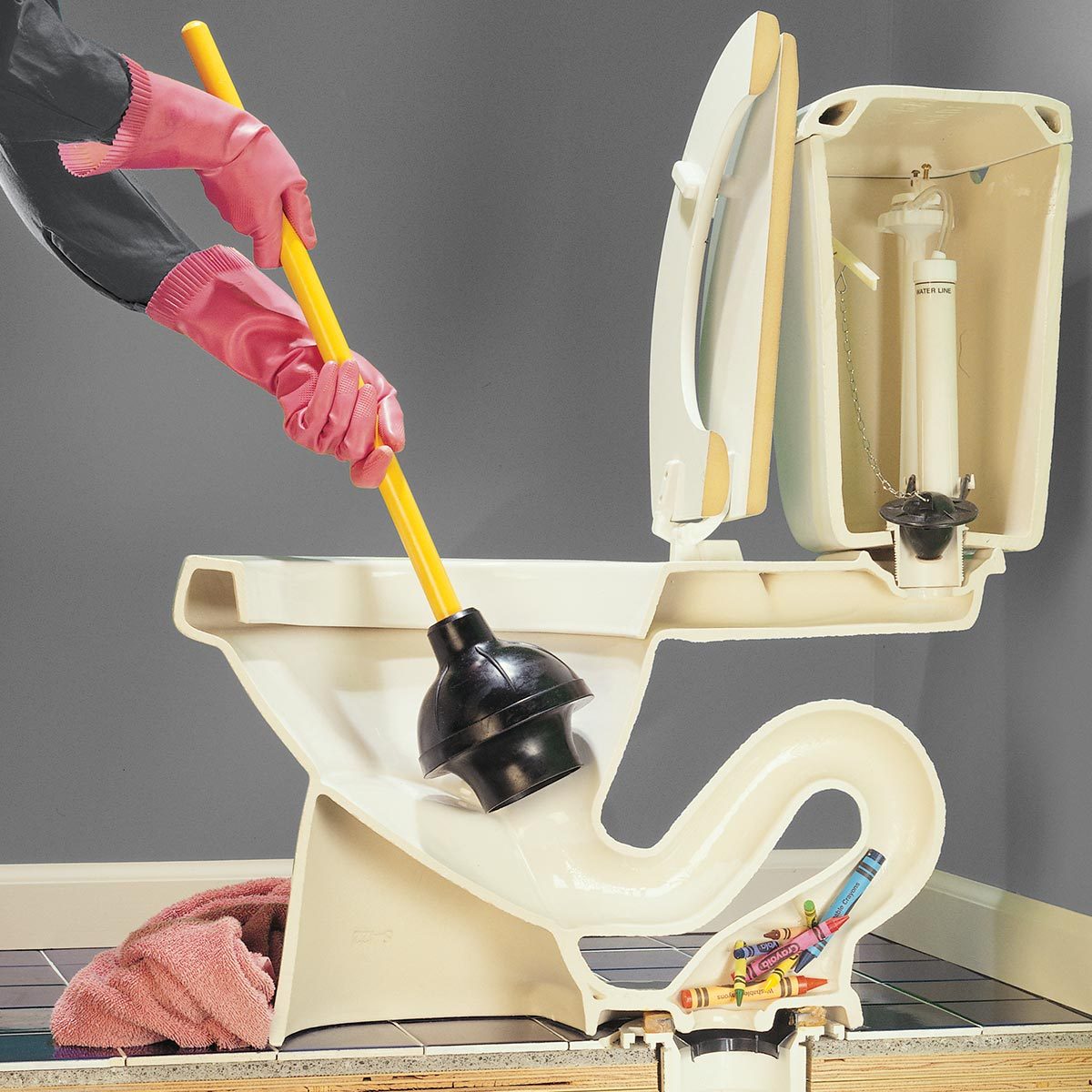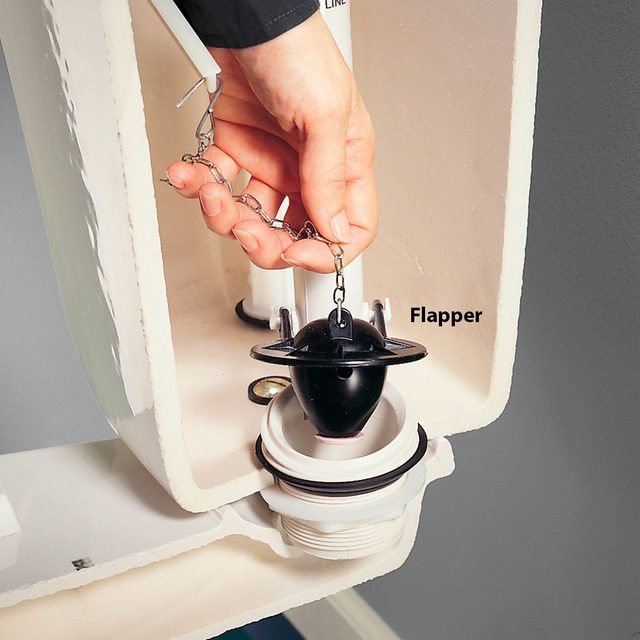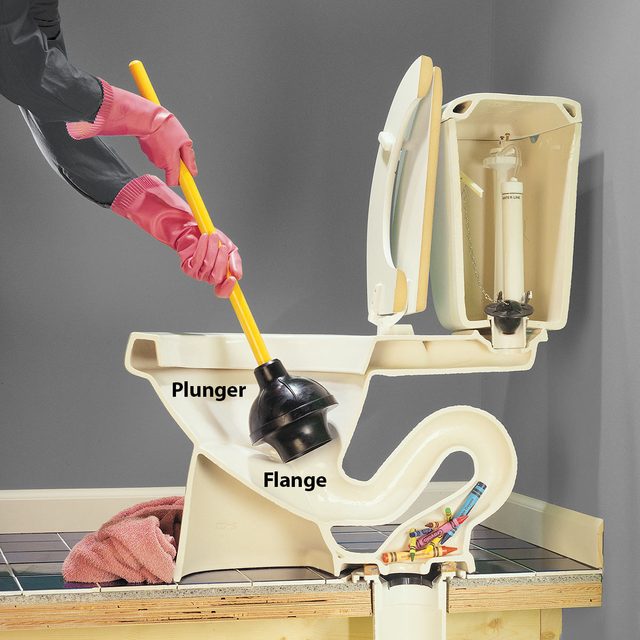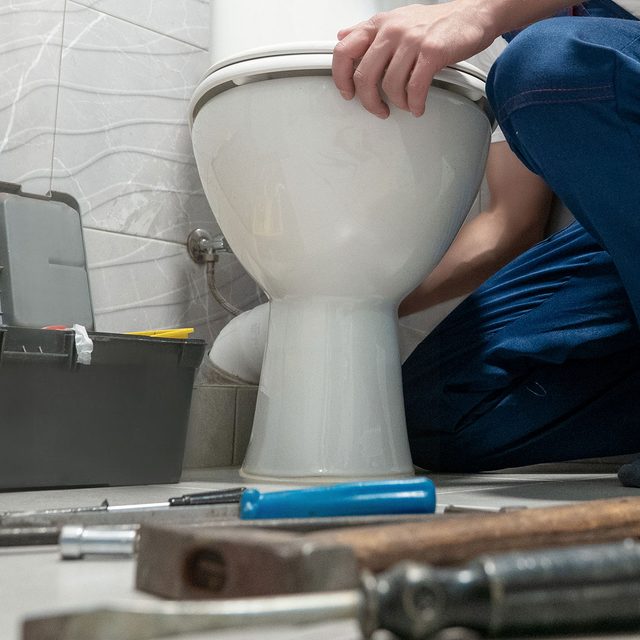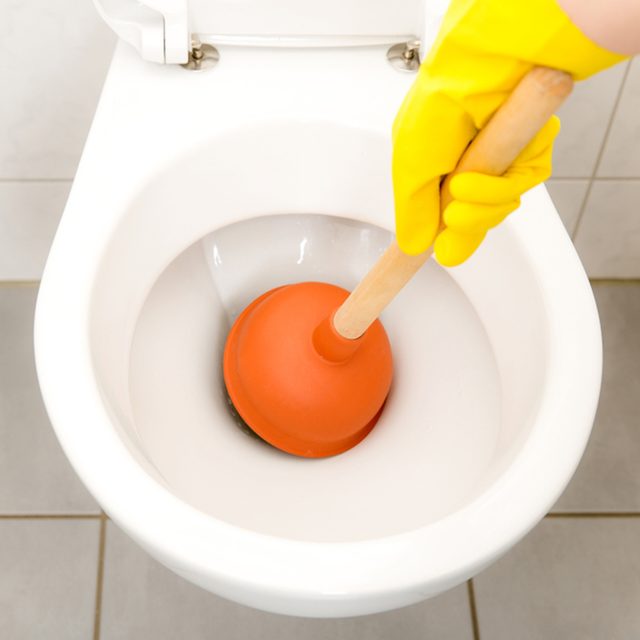How to Unclog a Toilet With a Plunger
A simple plunger will make you the family hero! Learn how to unclog a toilet here.
Our editors and experts handpick every product we feature. We may earn a commission from your purchases.
An hour or less
Beginner
Less than $20
Introduction
Clogged toilet? No problem. With a little practice and a plunger or a toilet snake, even a home repair rookie can get most clogged toilets back up and running in minutes (without flooding the bathroom and making the situation worse.)Tools Required
- Plunger
- Rubber gloves
Toilet Not Flushing All the Way? Here’s What to Do.
A poor flush means that your toilet drain is partially or completely plugged. Most clogged toilets are what are known as “slow drainers.” That is, flush water partially fills the bowl but doesn’t rush out and clean away the waste. The water level remains high, then usually drains down to normal height within a minute or two. You might not even know the toilet is clogged until you flush it. So if you suspect a problem, test the drainage first, then reach for the toilet plunger.
Project step-by-step (4)
How to Test the Drainage of a Toilet That Won’t Flush
Before trying to unclog the toilet through brute force, remove the tank lid, lift the flapper valve slightly to let a cup or two of water into the bowl, and see if the water goes down. Have towels ready, though, because flushing a clogged toilet may flood your floor!
Unclog a Toilet: Begin With a Plunger
For about 90 percent of clogged toilets, you only need one special tool — a toilet plunger. Buy a toilet plunger with an extension flange on the rubber bell-shaped end. A toilet plunger with an extension flange is designed to fit toilets better, so you can deliver more “oomph” to the plunge. The toilet plunger will unplug sink and tub drains, too, if you simply fold the flange back into the bell.
How To Use a Plunger
First, plunge the toilet with the rubber flange pulled out to get a better seal. Push in and out vigorously, keeping enough water in the bowl to cover the plunger. As always, towels handy to wipe up any water that splashes out.
Plunging Tips
A toilet plunger fits over and seals the toilet drain. Wear rubber gloves — things can get messy— and follow these plunging tips:
- Make your first plunge a gentle one. Initially, the bell will be full of air. A hard thrust will force the air back around the seal and blow water all over the bathroom and you!
- Once you force out the air, plunge vigorously in and out, maintaining the seal. You’ll be forcing water in both directions in the drain, which will effectively loosen most clogs. Stick with it, plunging 15 to 20 times if necessary.
- Be patient. Try alternating between steady strokes and occasional monster heaves.
- Keep enough water in the bowl so the toilet plunger stays covered. Trying to force air through the toilet trap won’t generate much pressure.
Most of the time, plunging is all it takes to clear the clog. But for tougher clogs, try using a toilet snake.
(Note: If you have repeated clogging, it might be a toilet performance issue. Learn how to improve your toilet’s performance here.)
Major Toilet Surgery (If All Else Fails)
If the clog resists all your efforts, you’ll probably have to pull up the toilet. This job will take several hours, because you have to turn off and unhook the water supply, partially disassemble the toilet, and unscrew it from its mounting ring. Chances are you can then get at the problem. Be sure to buy a new wax ring and new mounting bolts to reseal the toilet base to the mounting ring.
If other drains in your home are plugged, or if water comes up through them, the problem is probably farther down in the main drain pipes out of easy reach. For those clogs, you may have to call a plumber. Plumbers are expensive, but they can put your bathroom back in service fast, even if there’s a major blockage.
Bonus Toilet Unclogging Dos and Don’ts
1. Avoid Chemicals.
Don’t be suckered into thinking powerful chemicals will do the messy work for you. They sometimes work, but they’re slower. And when they don’t work, you have a drain full of corrosive water on your hands. If you tried chemicals and they didn’t work, run as much water into the toilet as possible and let it sit overnight to drain through the clog. Then, when you plunge, wear safety goggles and rubber gloves to keep the water out of your eyes and off your bare skin.
2. Keep the Toilet Cover Down.
A good way to avoid preventable clogs in the first place, especially if you have small kids, is to close the toilet lid. This keeps toys, crayons and hairbrushes from falling into the toilet.
3. Don’t Pour Hardening Compounds Down the Toilet.
Only pour a liquid down the toilet if it’s going to stay a liquid. What shouldn’t you pour down your toilet? These include such things as drywall joint compound, grease, caulk and wax products.
